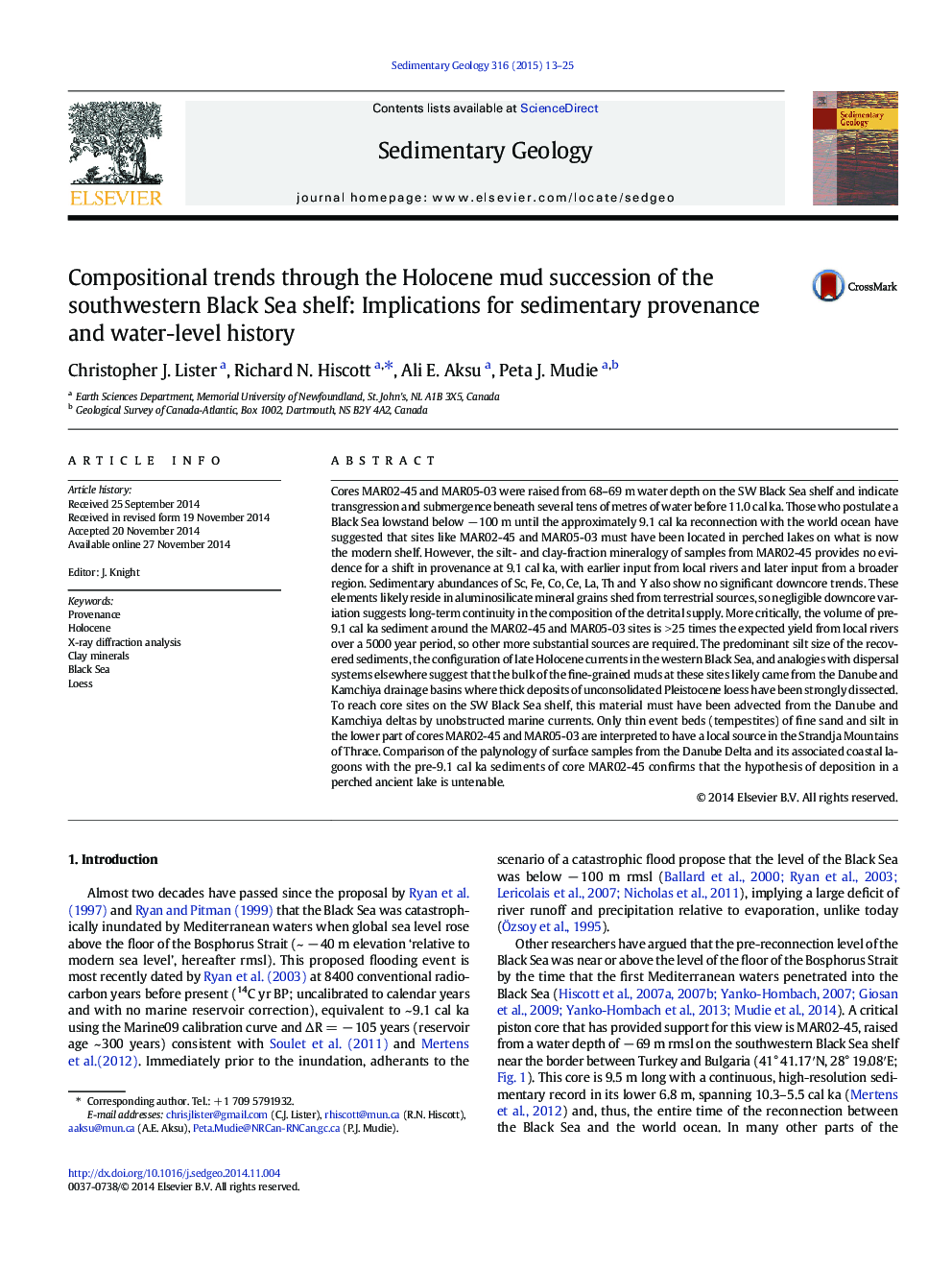| کد مقاله | کد نشریه | سال انتشار | مقاله انگلیسی | نسخه تمام متن |
|---|---|---|---|---|
| 4689297 | 1636047 | 2015 | 13 صفحه PDF | دانلود رایگان |
• There was locally continuous sedimentation on the SW Black Sea shelf from ~ 11–5 ka.
• Mineralogy and geochemistry indicate no source changes for shelf muds since 10.3 ka.
• The main inferred source is fluvially dissected loess in the Danube drainage basin.
• Transgression to − 50 m occurred by 11–12 ka, allowing free access to marine currents.
• There was only minor input (coarse silt and fine sand) from Thrace during storms.
Cores MAR02-45 and MAR05-03 were raised from 68–69 m water depth on the SW Black Sea shelf and indicate transgression and submergence beneath several tens of metres of water before 11.0 cal ka. Those who postulate a Black Sea lowstand below − 100 m until the approximately 9.1 cal ka reconnection with the world ocean have suggested that sites like MAR02-45 and MAR05-03 must have been located in perched lakes on what is now the modern shelf. However, the silt- and clay-fraction mineralogy of samples from MAR02-45 provides no evidence for a shift in provenance at 9.1 cal ka, with earlier input from local rivers and later input from a broader region. Sedimentary abundances of Sc, Fe, Co, Ce, La, Th and Y also show no significant downcore trends. These elements likely reside in aluminosilicate mineral grains shed from terrestrial sources, so negligible downcore variation suggests long-term continuity in the composition of the detrital supply. More critically, the volume of pre-9.1 cal ka sediment around the MAR02-45 and MAR05-03 sites is > 25 times the expected yield from local rivers over a 5000 year period, so other more substantial sources are required. The predominant silt size of the recovered sediments, the configuration of late Holocene currents in the western Black Sea, and analogies with dispersal systems elsewhere suggest that the bulk of the fine-grained muds at these sites likely came from the Danube and Kamchiya drainage basins where thick deposits of unconsolidated Pleistocene loess have been strongly dissected. To reach core sites on the SW Black Sea shelf, this material must have been advected from the Danube and Kamchiya deltas by unobstructed marine currents. Only thin event beds (tempestites) of fine sand and silt in the lower part of cores MAR02-45 and MAR05-03 are interpreted to have a local source in the Strandja Mountains of Thrace. Comparison of the palynology of surface samples from the Danube Delta and its associated coastal lagoons with the pre-9.1 cal ka sediments of core MAR02-45 confirms that the hypothesis of deposition in a perched ancient lake is untenable.
Journal: Sedimentary Geology - Volume 316, 1 March 2015, Pages 13–25
